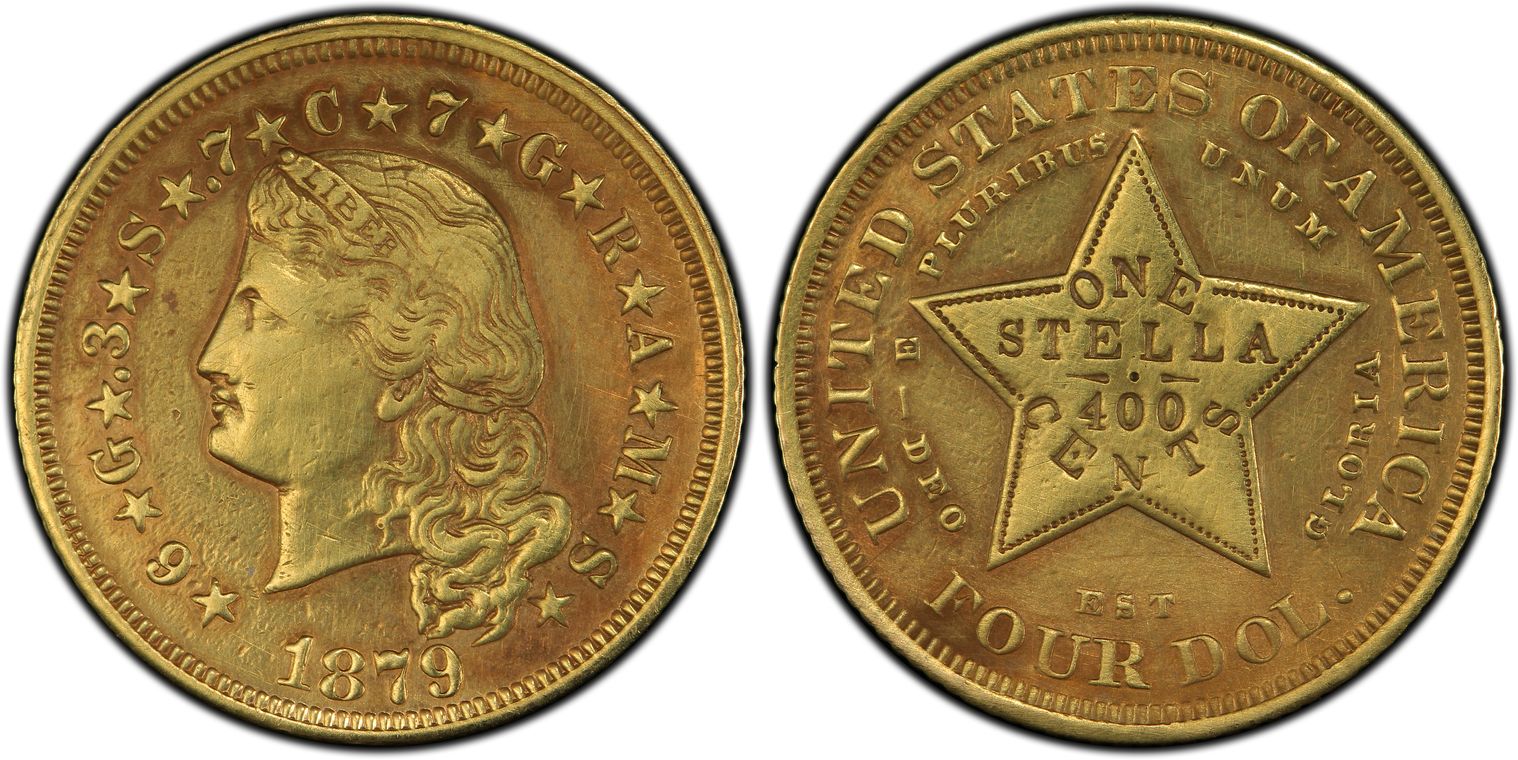1879 $4 Flowing Hair PR1 认证号25367386, PCGS号8057
专家评论
David Akers (1975/88)
Despite two previous and unsuccessful efforts at getting Congressional approval for an international gold coin, the idea was revived in 1879 when John Kasson, the United States minister to Austria and a former Chairman of the Committee of Coinage, Weights, and Measures, suggested to the Secretary of State that a coin be made that had a value close to that of the Austrian 8 Florin piece . The suggestion was quickly referred to the Secretary of the Treasury and then to Alexander Stephens, Chairman of the Coinage Committee. Since the value of the Austrian 8 Florin piece was approximately $3.88 (as were the approximate values of several other foreign gold pieces), the denomination of four dollars or 400 cents was an obvious choice. The details were worked out by Dr. Wheeler W. Hubbell of Pennsylvania, patentee of goloid metal and an advocate of the metric system. It was proposed that the new denomination have the name "Stella", which seemed appropriate since it was "in analogy to one eagle, both the star and eagle being national emblems on our coins." (Adams and Woodin, 1959, p. 171).
Two designs were produced in 1879, one by Charles E. Barber, the other by George T. Morgan. Barber's flowing hair design was virtually an exact copy of a pattern half eagle (J-1574) designed by his father, William Barber, the preceding year. Fifteen pieces were struck in 1879 (the so-called "originals") and early in 1880, an additional 400 were struck at the request of the Coinage Committee. Since no hubs were available to duplicate the dies, the old dies with the 1879 date were used. These 400 pieces are the so-called "restrikes." They were officially offered to members of Congress and personal or political friends at the production cost ($6.50). Quite a furor was raised by coin collectors and dealers when they learned of this and considerable letter writting and publicity ensued. S.K. Harzfeld, a dealer, also learned in an interview with Superintendent A.L. Snowden, that 150 or the 415 pieces struck were still in the vaults of the Mint as late as October, 1880. As was the case in 1868 and 1874, the idea on an international gold coin was rejected by Congress and was not proposed again.
The 1879 flowing hair stella is the second most common of all U.S. gold patterns and it has appeared for sale many more times than any of the other stellas. Obviously, it is impossible to state exactly how many of the original 415 still exist, but for what one guess is worth, I would estimate that at least 300 to 350 are still around, although certainly many of them are impaired to some degree. Contrary to popular belief, the retrikes do not always weigh 103.2 grains and therefore, many are offered as one of the 15 "originals", often at an inflated price, when in reality they are one of the more common 400 restrikes. The restrikes are usually identifiable by light adjustment marks or striations on the head of Liberty.
稀有性和存量估计 了解更多
| 所有评级 | 243 |
| 60或以上 | 187 |
| 65或以上 | 60 |
| 所有评级 | R-6.6 |
| 60或以上 | R-7.1 |
| 65或以上 | R-8.4 |
| 所有评级 | 2 / 2 |
| 60或以上 | 2 / 2 |
| 65或以上 | 2 / 2 |
| 所有评级 | 4 / 4 |
| 60或以上 | 4 / 4 |
| 65或以上 | 4 / 4 |






















